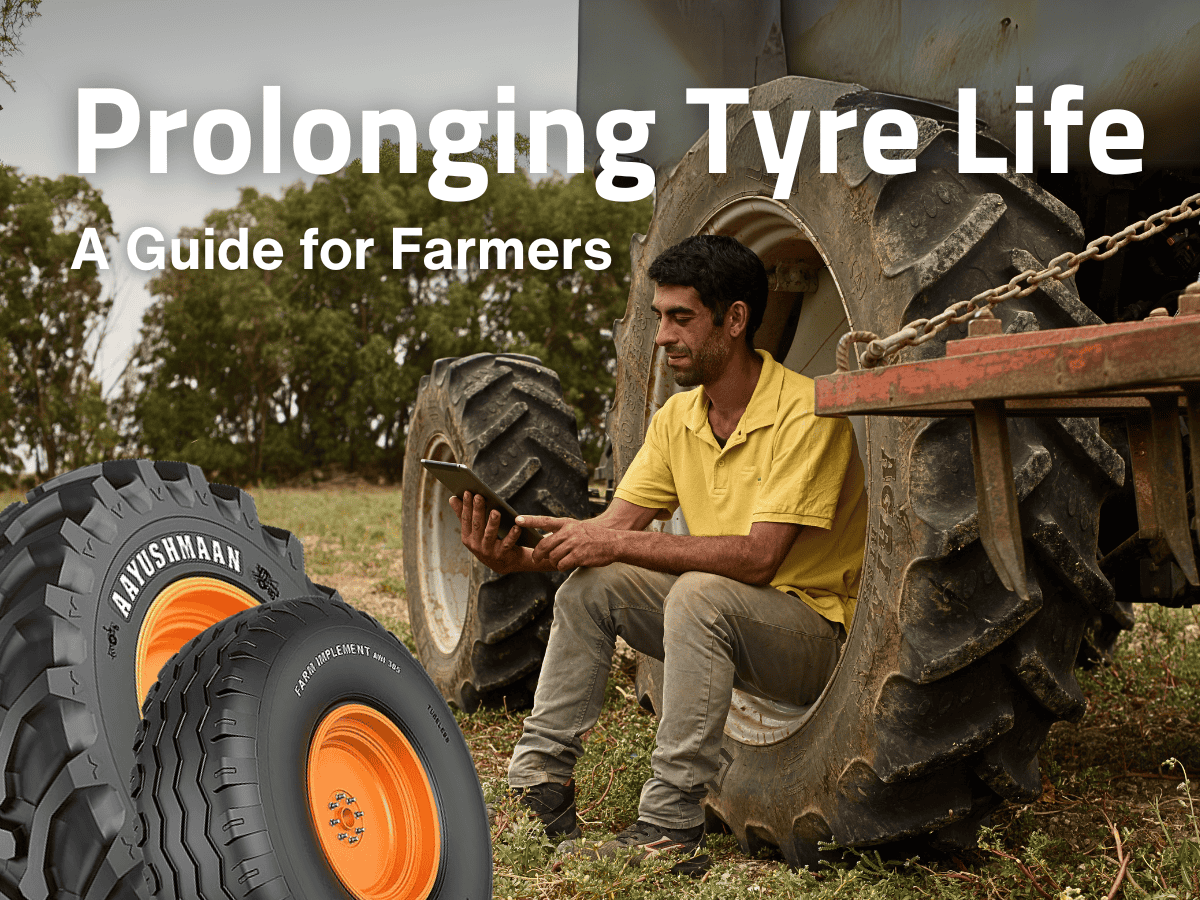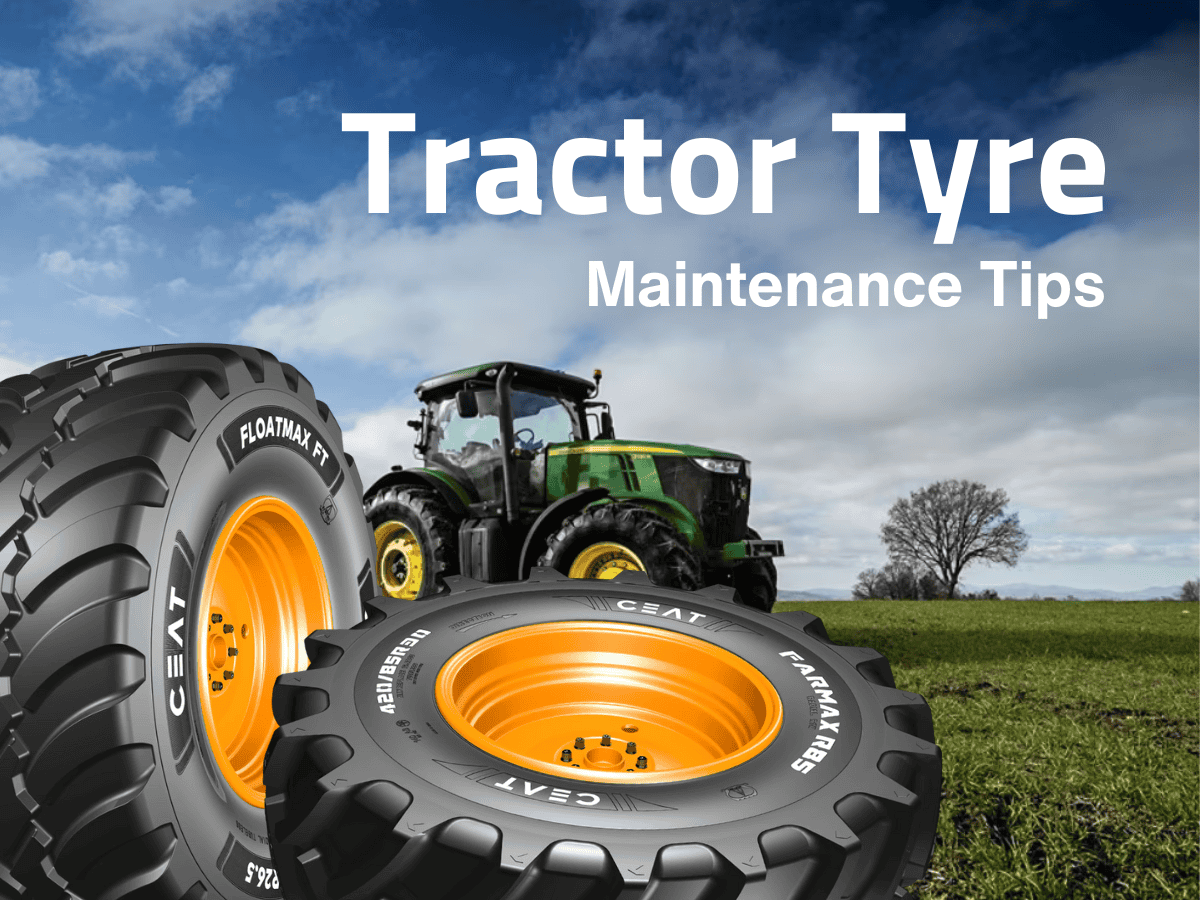ceat-speciality:blogs-tags/all,ceat-speciality:blogs-tags/tyre-care
Five essential techniques for optimal tractor tyre performance
Mon, 31 Jan 2022 | PRODUCTS
From material composition to tread design and carcase structure, modern tractor tyres have characteristics that mean they have greater power transmission capability and a lesser soil impact when compared with older types. But after scanning tractor tyres price lists for ‘tractor tyres for sale’ and ‘tractor tyres near me’, it’s wiseto follow a few tips if you want to optimise the performance of your purchases.
- Work in the best possible soil conditions you can
Farming – mainly arable farming – is, of course, a very weather-influenced business. While dry conditions can cause problems, more often than not, it is wet soils that present the most significant challenge to timeliness of field operations, successful results, and good yields of high-quality cropsat harvest. Working in particularly wet conditions – even if the tractor can maintain reasonable traction – can result in smearing and compaction of the soil and reduce work rates. If you have sufficient capacity to get your work done on time, consider whether the conditions in which you are working are affecting the soil’s health and structure, or whether you can wait a day or two for better weather. The performance of your tractor’s tyres will be optimised in drier soil.
- Manage the wheelslip of your tractor’s tyres
For optimal performance of tractor tyres in primary or secondary cultivations, the ideal target bracket for wheelslip is 12-15%. The figure will be at the lower end of this if your tractor is performing preliminary work, such as ploughing, subsoiling or stubble cultivation straight onto the field after a previous combinable crop harvest. If your tractor is working on ploughed or cultivated ground – performing secondary cultivations or drilling, for example –it is likely to be at the higher end of the bracket. For optimal performance, ensure your tractor’s wheelslip monitor, if it has one, is calibrated to this level.
- Consider a front-mounted press if performing secondary cultivations or drilling
Soils are cultivated to improve structure and drainage but, once loosened, often require reconsolidation to provide a firm, structured surface into which you can sow crop. Consolidation after ploughing can also break down large furrow slices in heavy soils or prevent moisture loss in lighter ones. Working directly onto ploughed but unpressed land can present difficult conditions in clay soil types and result in the tractor digging into sandier soil. To prevent this from having an impact on the tractor making the next pass after ploughing or primary cultivation, consider operating a front press on a front linkage if your tractor is equipped as such, to give your tractor’s tyres a firmer surface to gain traction.
- Keep a tractor tyre pressure gauge in your tractor’s toolbox
Keeping a regular check on tractor tyre pressures will be made much easier if your tractor has its own dedicated tractor tyre pressure gauge kept as part of the essentials in the tractor operator’s toolbox. Use it to check pressures at a fixed time daily if possible, or at least weekly, and ensure that the gauge is put back in its place each time. This tractor tyre check technique will pay dividends in ensuring your tractor’s tyres are always at the optimum pressures for the work they are asked to do and the weights they are expected to bear.
- Use weigh cells to determine the correct weighting for your tractor/implement combination
A good tractor tyre specialist, or at least the agricultural specialist from their supplier, should be equipped with a set of weigh cells that can be used to help set up the tractor tyre pressures for a particular tractor/implement combination. Use of weigh cells to determine wheel/axle loads and determine required weighting and tractor tyre pressures is especially applicable for tractors used with trailed primary cultivators and drills. Ask your dealer if they have such cells available and if they can help with the correct set-up of your tractor/implement combination. By determining the individual axle weights with the implement attached, they can then advise you on how to weight your tractor’s wheels and front-end for optimal tractor tyre performance.
These five essential techniques should help you get the best performance from your tractor tyres. Adopt them as a matter of course, and you will soon see the benefits.




























































































































